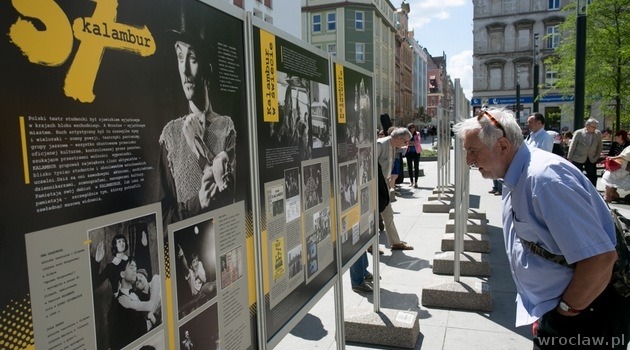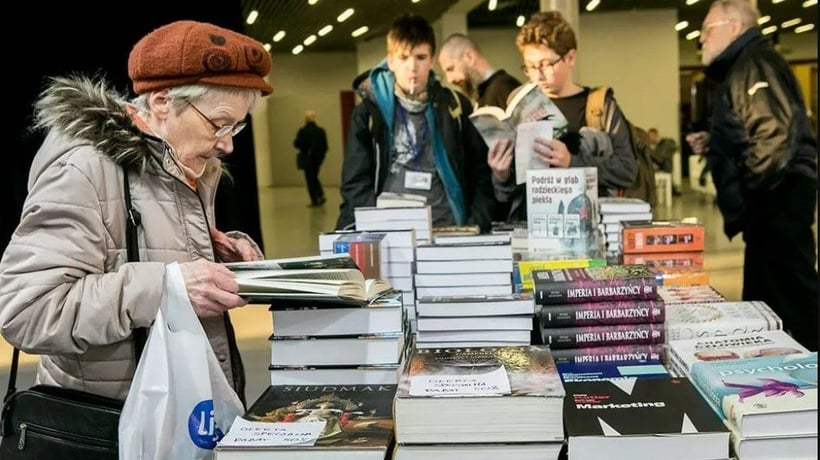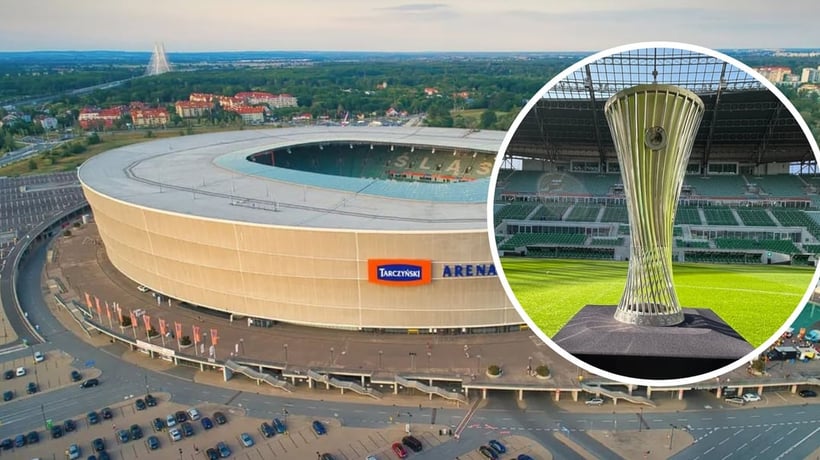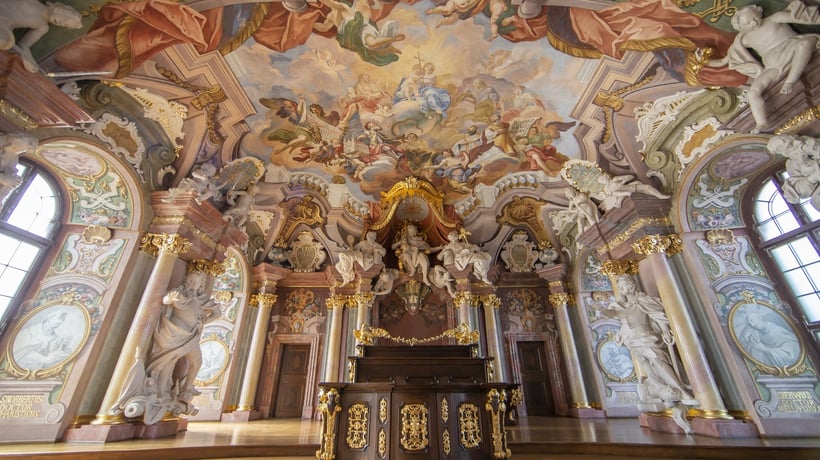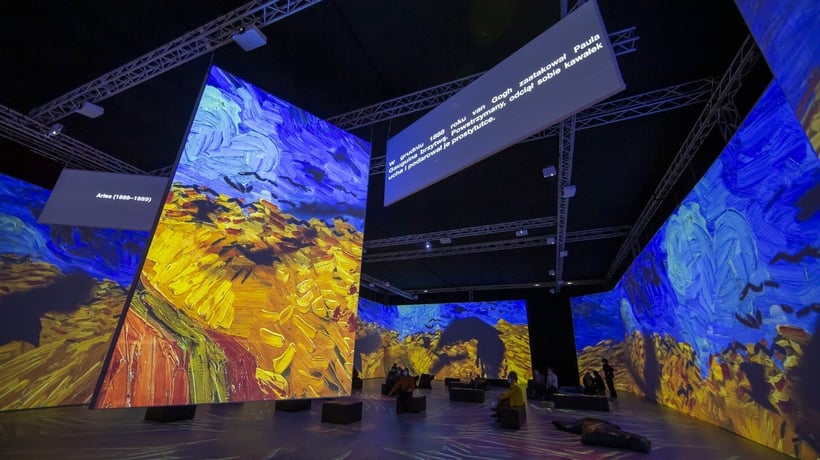Theatre Kalambur will celebrate its 57. anniversary on Saturday, June 21st at ul. Kuźnicza, but starting from Monday an exhibition opens, dedicated this legendary theatre's history, as well as 10 festivals of the Open Theatre. On that occasion Wrocław will host the Kalamburians - actors and friends of the theatre from all over the world.
Student theatre Kalambur was established in 1957 by Bogusław Litwiniec (who left physics for theatre) and Eugeniusz Michaluk. In the beginning Kalambur had no stage - the plays were performed in canteens and dormitories. The theatre finally landed under the hospitable roof of "The Palace" at ul. Kościuszki. Their performances were awarded first places in festivals both in Poland and abroad.
Censorship despises authorities
It was even their first performance "The Confiscation of Stars" - "a morality play in the form of mime scenes" - as one of contemporary censors put it, faced problems with censorship. The authorities didn't like the first title "The Confiscation of Starry Authorities", as it connoted too much with the Kremlin and the red star.
"We are celebrating the 57th anniversary, because we can't wait for a jubilee any more. Too many of us depart" said Halina Litwiniec.
"Everyone wanted to be a part of this theatre. Bogusław Litwiniec handled auditions for the actors" recalls Krystyna Kawczak, the theatre's actress. "I took part in one, and he told me to lay down on a piano and sing poetry. I thought there would be something more afterwards" she laughed "but he only said: "Miss, you are in!".
Apart form theatres such as Bim-Bom, STS, or Hybrydy, Kalambur was one of the most famous theatres, not only in Poland, but also in Europe.
"Before the slogan "Wrocław, the city of meetings" was coined, we have been organizing meetings that promoted Wrocław worldwide" stresses Krystyna Kawczak.
Stars in the Kalambur
Famous actors went through Kalambur - it was here that a singer, Anna German, took her first stage steps in a play "Po ulicach miasta chodzi moja miłość" [My love walks the city's streets"] in 1960, and Pola Raksa (the famous Marusia from "Four Tankmen and a Dog" TV series) starred in a literary cabaret in Piwnica pod Edulem in The Palace. It was also here that Ewa Dałkowska had her 1966 debut in "Łysa śpiewaczka" [Bald Singer], and Stanisław Szelc in Witkacy's "The Shoemakers".
"Kalambur was our life, our home, our school. It was here that we established families, it was here that our children were born" said Halina Litwiniec, the wife of Bogusław Litwiniec.
"The contemporary youth don't understand what went on in 1950s and 1960s, don't understand that need of ours to be together. It was something natural, it was on this soil that student theatres came into being" recalls Lena Kaletowa, a journalist, and the theatre's actress. "Kalambur was born out of our disappointment in reality, but also of hope. In 1956 the reins of power went over to Władysław Gomułka, the thaw started, and the whole generation of the communist Polish Youth Society, disappointed with ideas of the day, went in the direction of creating and searching. We were the avant guard, and intelligentsia audience followed us. We weren't received in a vacuum, we attracted many students.
"At that time Wrocław was black, dirty, and full of ruined houses" recalls Krystyna Kawczak. "And all of a sudden Litwiniec appeared, and proposed something different, something new. It was not a theatre following the official, ideological line, there were no plays about Lenin or workers. The authorities tolerated us, and treated as a social safety valve. In Kalambur were many beautiful and young girls, but it was not easy to stay in the crew, as Litwiniec was anti-feminist" laughed Mrs. Krystyna.
The family of Kalamburians
Kalambur is a big, three-generation family. It is composed of the founders - the grandfathers, the middle generation, and their children.
"Kalambur is also the 1980s, let's not forget about that" points out Dorota Sapińska, responsible for Kalambur's publications. "In those years we weren't friends with the censors, we struggled for paper allowances. In these abnormal times Kalambur was the normal world. We read a lot, exchanged thoughts. This was what bound us together, since we had no mobile phones and Internet. We organized concerts featuring Maciej Zembaty, Marek Grechuta, or Roman Kołakowski. We used a regulation stating that a 100-audience event is a closed one. Often in a café we had a crowd of even 200 people!
To attend Kalambur's shows people could flock in from all over Poland, or even escape from a hospital. "I remember a man who came to see us in pyjamas. It was 1984, we staged a show featuring songs from Lviv. The man escaped from a hospital to see it" remembers Dorota Sapińska.
The Open Theatre
Theatre Kalambur is also 10 Open Theatre Festivals, featuring theatres from all over the world - from New Zealand, through Asia, both Americas and Europe to a Sami theatre from Iceland. Such renowned artists as e.g. Pina Bausch performed in Wrocław for board and lodging, i.e. a student canteen slip, and a bed in a student dorm. "They didn't charge us, because we had no money to pay them anyway. They just wanted to perform on the other side of the iron curtain, take part in something so unique as our festival - remember the Kalamburians. The last festival took place in 1993. In May 1994 the last première took place, Egon Wolff's "Paper Flowers", directed by Robert Czechowski, and in June the theatre was dissolved - after the transition there was no agreement between the local government and the United Entertainment Industries, to which the theatre was subject .
This year saw the setting up of a committee featuring Krystyna Kawczak, Halina Litwiniec and Mira Nikodemska. The ladies decided to remind Wrocław of Kalambur - recall its tradition and commemorate achievements. It is thanks to them that the legendary theatre celebrates its 57th jubilee.
The third generation
What is left today of Kalambur is a café, Art Cafe Kalambur, which is run by the next, youngest generation of Kalamburians.
"I continue my parent's tradition" says Michał Litwiniec. "In this place I try to combine both the old and the new generation. We came up with an idea to commemorate the jubilee by presenting various kinds of open art.
On Saturday, June 21st, ul. Kuźnicza will become overrun with artists. At 11:00 starts the painting of Kalambur mural, and buskers - street artists - will be performing until 17.30.
The Dixi Tiger Band will perform at the stained glass of the Pod Kalamburem café at 17.30. After their performance a commemorative plaque and a sculpture will be unveiled, marking Kalambur's activity. The plaque was designed by Hanna Jelonek, and the sculpture by Michał Staszczak.
After the celebrations, a performance of Small Instrument Piano Activities Małych Instrumentów and guests is planned. Next, as a part of "Kalambur Songs' Night", will perform famous actors, who in their professional life have got in contact with Kalambur. Among the participants will be: Ewa Dałkowska, Krystyna Krotoska, Jolanta Chełmicka, Alicja Baranowska, Tadeusz Drozda, Krzysztof Piasecki, Edward Lubaszenko, Ryszard Wojdyłło. The concert will be hosted by Jerzy Bielunas.
The evening will be closed by a happening (21.30) by Stanisław Wolski and the Dolls' Clinic, as well as by a concert of Karbido group, "A Table On the Street".
"I don't want to reveal all details of the programme, to keep the audience waiting for surprises" said Michał Litwiniec. "We welcome everybody" he stressed.
Agnieszka Kołodyńska
